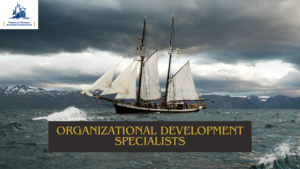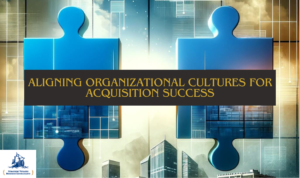The Hawthorne Effect: Organizational Development with a Scorecard
The Hawthorne Effect: Organizational Development with a Scorecard
In the modern, privacy glass-walled boardroom of QuantumVentures, tension was palpable. Four C-suite executives were engaged in a heated exchange, their voices rising and echoing off the polished surfaces.
“We can’t keep operating like this!” exclaimed Sarah, the COO, her frustration evident. “These financial reports are useless by the time we get them. How are we supposed to make informed decisions weeks or months after the fact?”
Mark, the CTO, nodded in agreement. “We’re supposed to be a tech-forward company, yet our financial reporting is stuck in the dark ages. We need real-time data, not historical figures that don’t reflect our current situation.”
The CEO, James, looked exasperated. “We’re flying blind. Every time I ask for a financial update, I’m told it’s not ready. How can we strategize effectively if we don’t know where we stand financially?”
Linda, the CMO, added, “And let’s not forget the impact on our marketing strategies. Without up-to-date financial insights, we’re making decisions based on guesswork. It’s affecting our campaigns and our bottom line.”
The room fell silent, each executive lost in their thoughts, grappling with the frustration of an outdated accounting system that was hindering their progress.
Just then, the door opened, and in walked Matt Wilhelmi. Their new Organizational Development Consultant with a background as a CFO was taller than they’d remembered. With a freshly pressed sport coat and lululemon pants, his relaxed confident demeanor and a gentle smile he shook each executives hand. Matt sensed the tension and knew this was the moment to introduce a solution.
“Good morning, everyone,” Matt began, setting down a sleek laptop on the table. “I couldn’t help but overhear the concerns about the financial reporting process. I’m here to help turn this around.”
James leaned forward, his interest piqued. “We’re all ears, Matt. What do you have in mind?”
Matt smiled and began, “Are you familiar with the Hawthorne Effect? We’re going to take the first step towards addressing this issue by bringing about a new way of thinking related to progress and organizational results. I’m talking about developing a comprehensive scorecard. This isn’t just about real-time financial data; it’s about creating a holistic view of our performance, integrating financial metrics with operational and strategic goals.”
Linda raised an eyebrow. “How is this different from what we have now?”
“Great question,” Matt replied. “The scorecard will provide real-time accountability across various key performance indicators, not just financial ones. This way, we can see how different aspects of the business are performing in relation to each other. Moreover, the act of measurement itself can drive performance improvements—a phenomenon known as…
“The Hawthorne Effect.” James, the CEO, finished Matt’s sentence.
Mark looked intrigued. “You mean just by measuring and tracking these KPIs, we can improve our performance?”
“Exactly,” said Matt. “When employees know their performance is being tracked each week, they tend to be more engaged and motivated. This scorecard will be designed to not only provide us with the data we need but also to foster a culture of continuous improvement and accountability.”
Sarah nodded slowly, seeing the potential. “So, where do we start?”
“We start by defining our objectives and identifying the key areas that align with our strategic goals,” Matt explained. “From there, we select specific, measurable KPIs and establish a system for real-time data collection and reporting. This will transform our financial reporting process and ensure we’re making informed decisions based on the latest data.”
James smiled for the first time that morning. “Alright, Matt. Let’s get started. It sounds like this could be the game-changer we’ve been looking for.”
As the executives leaned in, eager to hear more about Matt’s plan, a sense of optimism filled the room. They had finally found a way to bridge the gap between their strategic ambitions and the practical realities of their operations. And with Matt’s expertise, they were ready to take the first step towards a more dynamic, responsive, and successful future.
Here are the 8 steps to get a comprehensive scorecard for your business:
Step 1: Define Objectives and Goals
- Collaborate with Leadership: Engage with executive leadership to understand the organization’s strategic objectives and key goals.
- Identify Key Areas: Determine the critical areas that need to be measured to align with these strategic objectives (e.g., financial performance, customer satisfaction, internal processes, and learning and growth).
Step 2: Determine Key Performance Indicators (KPIs)
- Select Relevant Metrics: Identify specific, measurable, achievable, relevant, and time-bound (SMART) KPIs that will effectively track progress toward the defined objectives.
- Align with Strategic Goals: Ensure that each KPI is directly linked to one or more strategic goals of the organization.
Step 3: Gather Baseline Data
- Collect Existing Data: Compile historical data and current performance metrics to establish a baseline for each KPI.
- Analyze Trends: Evaluate past trends to understand current performance levels and identify areas for improvement.
Step 4: Develop the Scorecard Framework
- Design the Scorecard Structure: Create a balanced scorecard that includes financial, customer, internal process, and learning and growth perspectives.
- Integrate Financial Insights: Use your financial expertise to ensure that financial metrics are accurately represented and aligned with other performance areas.
Step 5: Implement Data Collection and Reporting Systems
- Select Tools and Platforms: Choose appropriate data collection and reporting tools that integrate seamlessly with existing systems.
- Establish Reporting Procedures: Define clear procedures for data collection, reporting frequency, and responsibility assignments.
Step 6: Communicate and Train
- Engage Stakeholders: Communicate the purpose, benefits, and components of the scorecard to all relevant stakeholders.
- Provide Training: Conduct training sessions for employees on how to use the scorecard, interpret the data, and take action based on the insights.
Step 7: Monitor, Review, and Refine
- Regular Monitoring: Continuously monitor the performance against the KPIs and review the scorecard regularly to ensure it remains relevant and effective.
- Feedback Loop: Collect feedback from users and stakeholders to identify any issues or areas for improvement.
- Adjust and Improve: Make necessary adjustments to the scorecard framework, KPIs, and data collection methods based on feedback and evolving organizational needs.
Step 8: Ensure Alignment and Integration
- Align with Organizational Processes: Integrate the scorecard into the organization’s performance management, strategic planning, and decision-making processes.
- Maintain Alignment with Goals: Regularly reassess the alignment of the scorecard with the organization’s strategic objectives to ensure it continues to drive desired outcomes.
This process ensures that the scorecard is not only comprehensive and aligned with organizational goals but also practical and actionable.
Want to get started with Strategic Voyages?
Fill out our contact form and a member of our team will personally reach out to you and discuss next steps.





